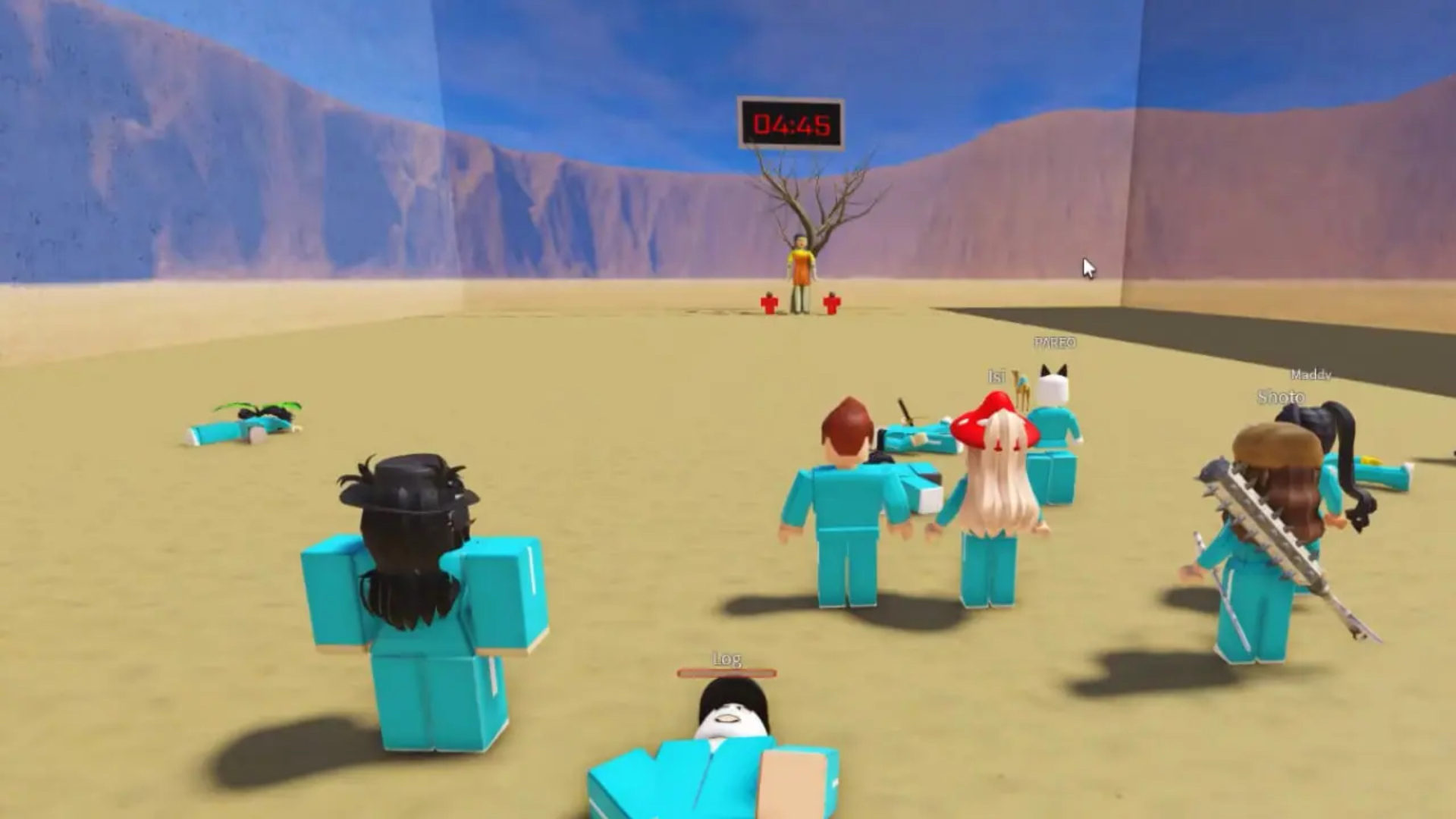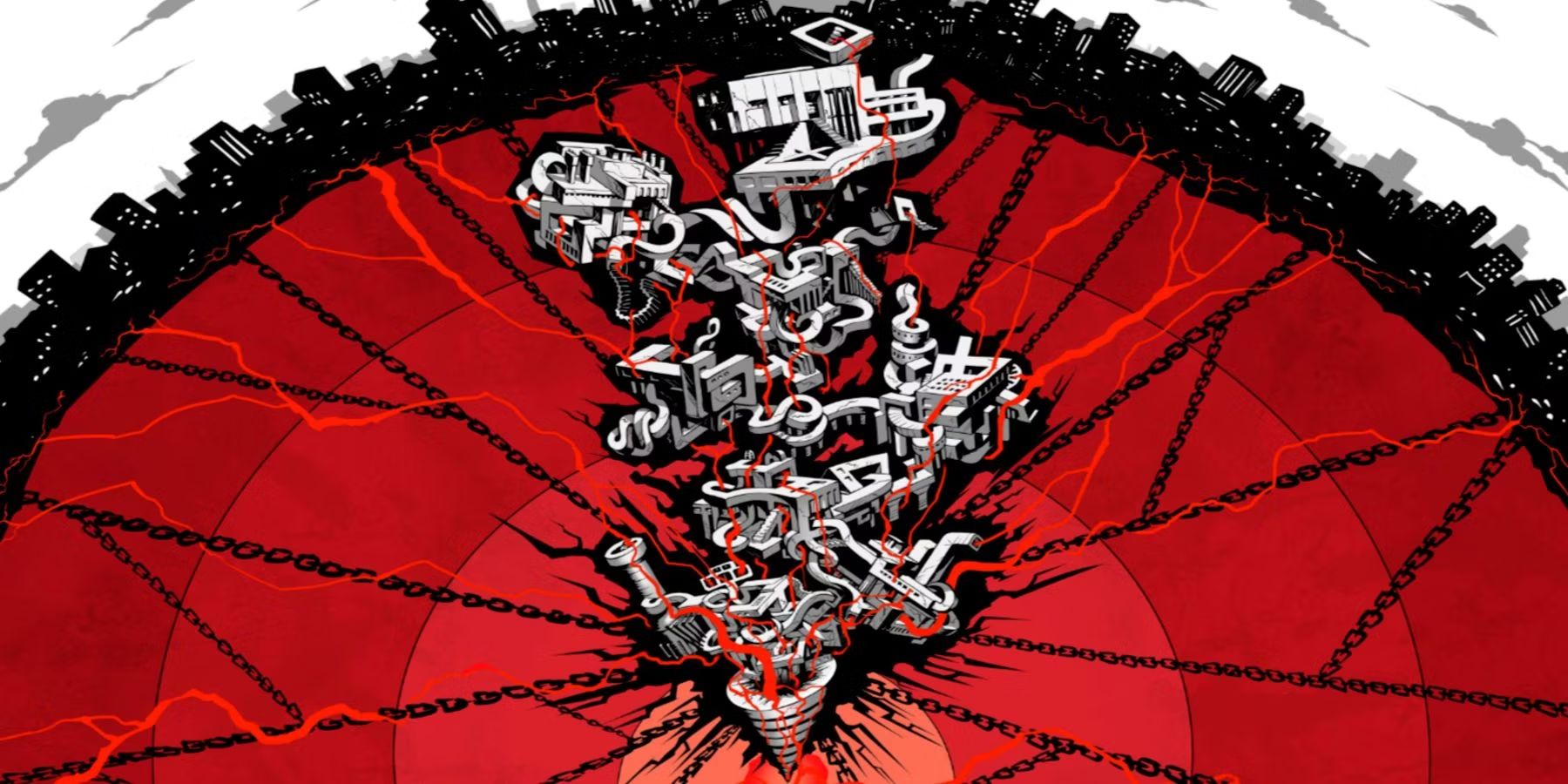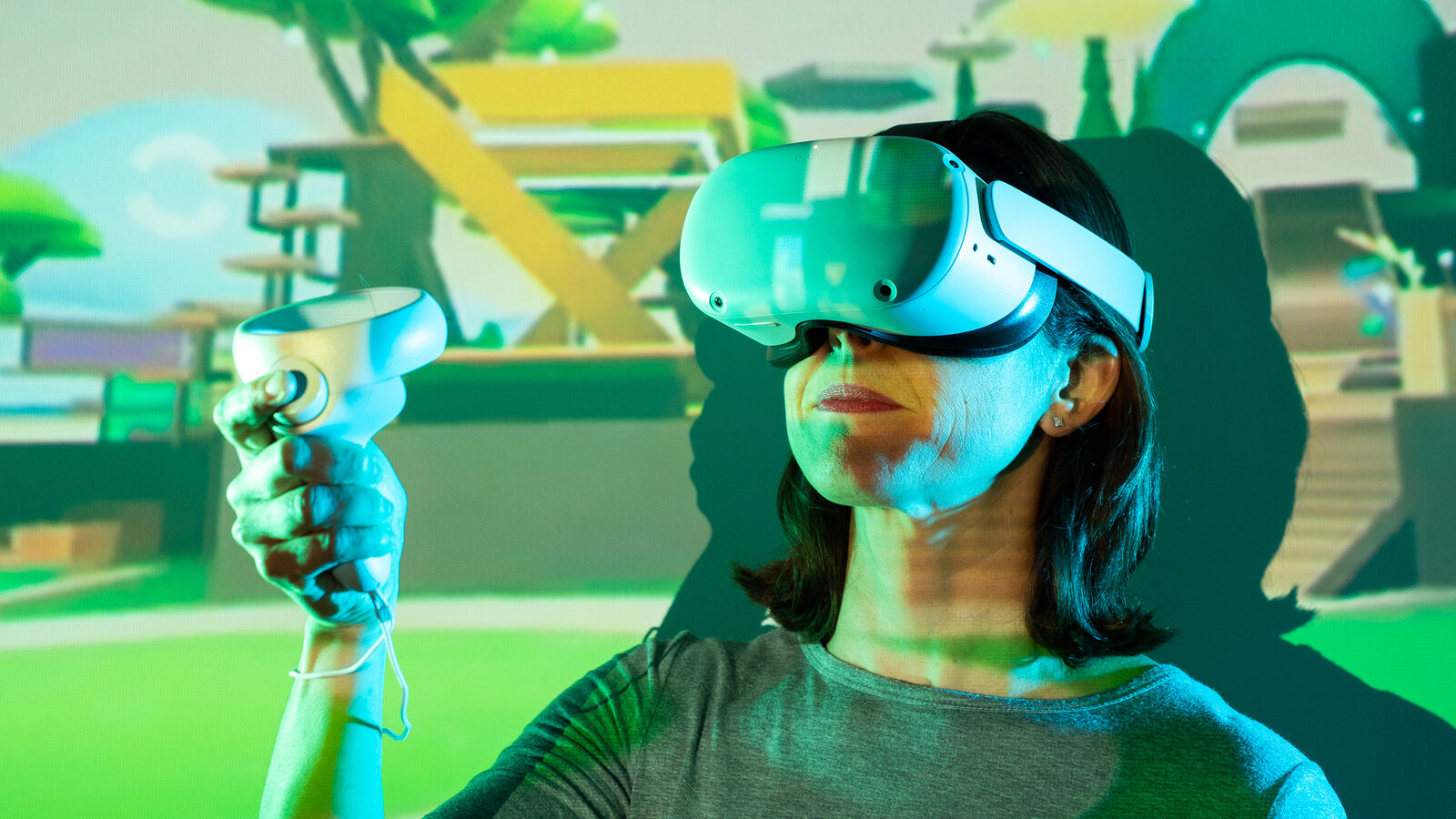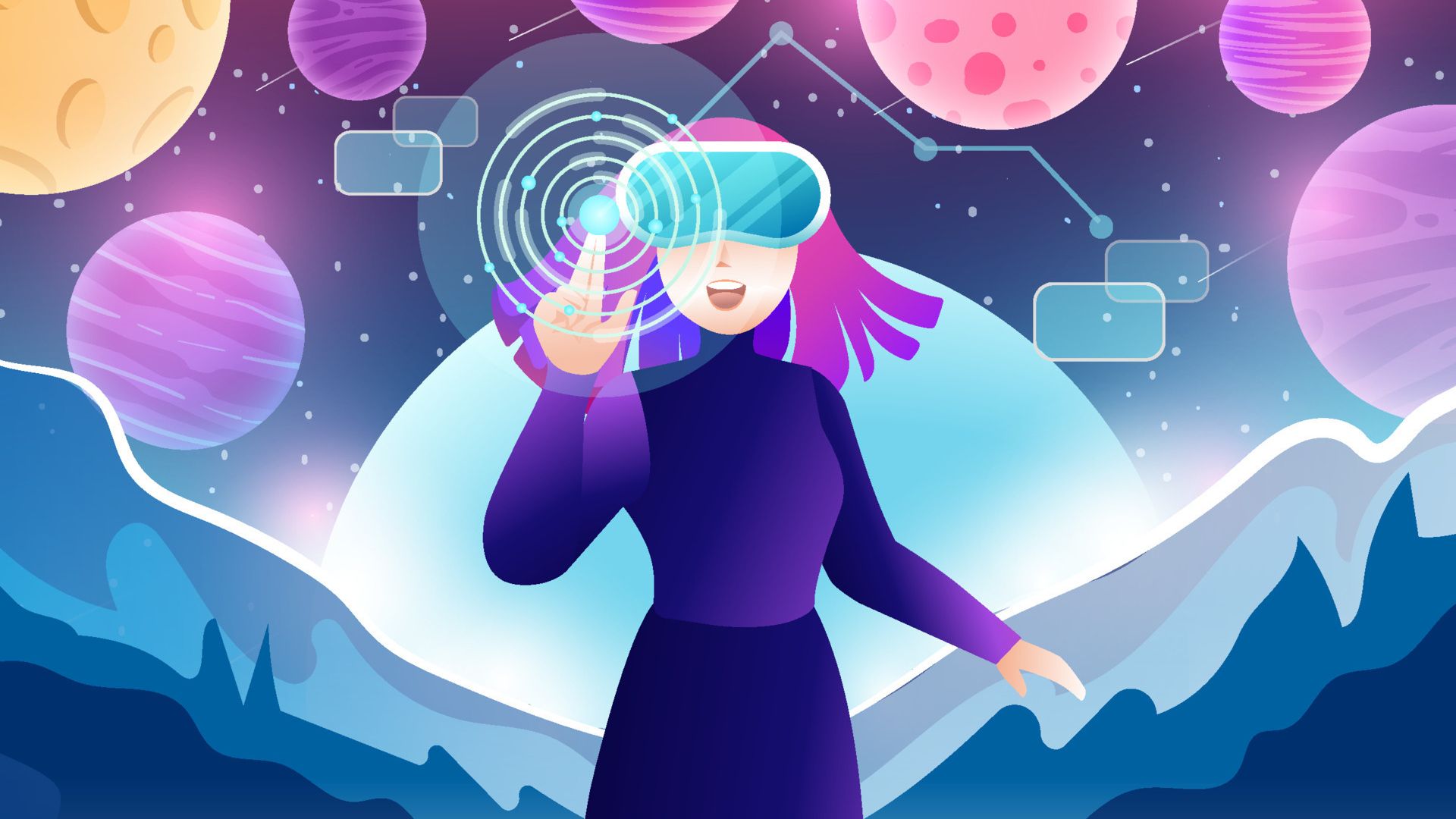Introduction
Welcome to the exciting world of metaverse game development! In this article, we will explore the steps and considerations involved in creating a metaverse game. The metaverse, a virtual reality space where people can interact with a computer-generated environment and other users, has gained immense popularity in recent years. As the demand for immersive experiences grows, the development of metaverse games has become a burgeoning field. Whether you’re a game developer looking to venture into this new frontier or a curious enthusiast eager to learn more, this article will provide you with insights and guidance.
The metaverse offers endless possibilities for creativity and innovation. By combining elements of virtual reality, augmented reality, and online gaming, metaverse games provide users with immersive and interactive experiences that transcend traditional gaming boundaries. From exploring vast virtual worlds to connecting with players worldwide, these games offer a whole new level of immersion and engagement.
While developing a metaverse game may seem like a daunting task, this article will break down the process into manageable steps. We will cover everything from brainstorming game ideas and selecting suitable game engines to designing characters and implementing multiplayer functionality. Additionally, we will discuss how to add visual and audio effects that enhance the overall player experience.
Creating a metaverse game requires a combination of technical knowledge, creativity, and attention to detail. Throughout this article, we will highlight the essential aspects of each step and provide tips and insights to help you navigate the development process successfully. So, whether you’re a seasoned game developer or just starting out, get ready to embark on an exciting journey into the metaverse with this comprehensive guide.
Understanding the Metaverse
Before diving into the development process, it’s crucial to have a solid understanding of what the metaverse is and how it functions. The metaverse is a virtual reality space where users can interact with a computer-generated environment and other participants. It’s a shared online space where individuals can explore, create, socialize, and engage in various activities, similar to the real world but with limitless possibilities.
The metaverse is not limited to a single platform or game. Instead, it encompasses a network of interconnected virtual worlds, allowing users to seamlessly transition between different environments. In these virtual spaces, users can assume digital identities, known as avatars, that represent them and enable them to interact with other avatars as well as the environment itself.
One key aspect of the metaverse is its emphasis on social interaction. Users can communicate and collaborate with each other in real-time, whether through voice or text chat, enabling the metaverse to become a thriving community. This social component adds depth and richness to the overall experience, fostering a sense of community and shared exploration.
The metaverse also offers a wide range of activities and experiences. From attending virtual events and concerts to exploring fantastical worlds or solving puzzles, the possibilities are vast and varied. Users can participate in games, engage in virtual commerce, or even create their own virtual goods and experiences for others to enjoy.
As the metaverse evolves, it presents exciting opportunities for businesses and creators. Brands can establish a presence within the metaverse and engage with their audience in new and immersive ways. Artists and content creators can showcase their work and monetize their creations within virtual marketplaces.
To fully embrace the metaverse, developers must understand the underlying technologies and platforms. Virtual Reality (VR) and Augmented Reality (AR) are integral components of the metaverse, enabling users to experience immersive and interactive environments. Additionally, various game engines and platforms provide tools and frameworks for metaverse game development, facilitating the creation of realistic graphics and physics simulations.
Understanding the metaverse and its core principles is essential for successfully navigating the development process. By grasping the concept of a connected virtual reality space and the importance of social interaction and immersive experiences, developers can create engaging and vibrant metaverse games.
Brainstorming Game Ideas
When it comes to creating a metaverse game, the first step is to brainstorm compelling and innovative game ideas. This stage is crucial as it sets the foundation for the entire development process. Whether you’re aiming for an action-packed adventure, a virtual world-building experience, or a social simulation game, the possibilities are endless.
Start by considering the genre of your game. Would it be a fantasy RPG, a futuristic sci-fi game, or a virtual reality simulator? Think about the elements that make your chosen genre unique and how they can be integrated into the metaverse experience. Consider the gameplay mechanics and the interactions players would have with the environment and other users.
Explore different themes and settings. From ancient civilizations to futuristic cities, from magical realms to outer space, there are countless worlds and settings to choose from. Consider how your chosen theme aligns with the immersive nature of the metaverse and how it can captivate players’ imaginations.
Consider the social aspect of your game. The metaverse thrives on social interactions, so think about how players can collaborate, compete, or simply engage with each other. Will there be shared spaces where players can gather, trade, and socialize? Are there cooperative or competitive gameplay elements that encourage interaction and competition among players?
Think about unique and innovative features that can set your game apart from others in the metaverse. Perhaps your game could have a dynamic weather system that affects gameplay or a robust crafting system that allows players to create and trade virtual goods. These features will not only enhance the overall experience but also attract players looking for something new and exciting.
Consider the scalability and extensibility of your game idea. Will it be possible to expand the game with new content, levels, or features in the future? This is particularly important for long-term engagement and player retention. Think about how you can create a game world that evolves and grows along with its player base.
During the brainstorming phase, it can be helpful to gather feedback from other developers or potential players. Sharing your ideas with others can spark new insights and perspectives, helping you refine and improve your game concept. Additionally, researching existing metaverse games and virtual reality experiences can provide inspiration and help you spot gaps in the market that your game idea can fill.
Remember, the key to a successful metaverse game idea is to offer an immersive, engaging, and unique experience. By brainstorming creative ideas and considering the various aspects mentioned above, you can lay the foundation for a captivating and exciting metaverse game.
Choosing a Game Engine
Once you have a solid game idea for your metaverse game, the next step is to choose a suitable game engine to bring your vision to life. A game engine is a software framework that provides developers with the necessary tools and functionality to create and develop games.
When selecting a game engine for your metaverse game, there are several factors to consider. Firstly, assess the compatibility of the game engine with metaverse development. Look for engines that support VR and AR technologies, as well as online multiplayer features. These capabilities are essential for creating an immersive and connected metaverse experience.
Consider the ease of use and the learning curve associated with the game engine. If you are a beginner or have limited programming experience, opting for a more user-friendly game engine with extensive documentation and community support can help streamline the development process. On the other hand, if you’re an experienced developer looking for more advanced features and customization options, a robust and flexible game engine may be more suitable.
Take into account the performance and optimization capabilities of the game engine. Creating a visually stunning metaverse game requires a game engine that can handle complex graphics and physics simulations without sacrificing performance. Ensure that the engine you choose supports efficient rendering, optimization techniques, and scalability to handle large-scale virtual environments.
Consider the licensing model and cost associated with the game engine. Some engines offer free or open-source options, while others require a paid license. Evaluate your budget and determine which option aligns with your financial resources and project requirements. Pay attention to any potential royalties or revenue-sharing agreements associated with the game engine, as this can impact the long-term profitability of your metaverse game.
Research the community and support system surrounding the game engine. A strong and active community can provide valuable resources, tutorials, and forums where you can seek help and share knowledge. Additionally, a supportive developer community ensures that the game engine is continually evolving with updates and improvements.
Consider the platform compatibility of the game engine. Depending on your target audience and desired platforms, ensure that the engine supports the necessary platforms, such as PC, consoles, or mobile devices. Cross-platform compatibility can extend the reach of your metaverse game and allow players to enjoy the experience on their preferred devices.
Finally, evaluate the reputation and track record of the game engine. Look for successful metaverse games or other well-known titles that have been developed using the engine. This can give you an idea of its capabilities and potential in creating a high-quality metaverse experience.
By carefully considering these factors, you can choose a game engine that aligns with your game idea and development goals. Remember, the game engine will be the foundation of your metaverse game, so select one that provides the necessary features, performance, and support to bring your vision to life.
Creating the Game Environment
One of the most exciting aspects of metaverse game development is creating the virtual game environment. The game environment sets the stage for the player’s experience, immersing them in a visually stunning and interactive world. Here are the key steps to consider when creating the game environment for your metaverse game.
Define the overall look and feel of the game environment. Determine the art style, whether it’s realistic, stylized, or cartoony, and establish a consistent visual direction. Consider the theme and setting of the game and how they can be reflected in the environment design. Pay attention to color schemes, lighting, and textures to create a cohesive and captivating atmosphere.
Design the terrain and landscape of the game world. Think about the topography, including mountains, forests, and bodies of water. Use terrain generation tools to sculpt the landforms and add realistic details such as foliage, rocks, and rivers. Consider how the environment will affect gameplay, whether it provides strategic advantages or poses obstacles for the player.
Create and place objects and props within the game environment. These can include buildings, structures, furniture, and other interactive elements. Pay attention to the placement and arrangement of these objects to ensure a sense of realism and immersion. Use repetition and variation techniques to add depth to the environment and make it feel alive.
Add interactive elements to the environment. Consider how players can interact with the environment, whether it’s by collecting resources, solving puzzles, or triggering events. Implement physics-based interactions to make objects react realistically to player actions, adding another layer of immersion and engagement.
Integrate environmental storytelling into your game world. Use visual cues, hidden secrets, and environmental details to convey the game’s lore and narrative. Create areas of interest that encourage exploration and discovery, giving players a sense of agency and purpose within the game environment.
Pay attention to the sound design of the game environment. Use ambient sounds, background music, and audio effects to enhance the player’s immersion and evoke the desired emotional response. Consider how sound interacts with the environment, whether it’s the footsteps of the player on different surfaces or the ambient noises of the surroundings.
Optimize the game environment for performance. Implement optimization techniques such as level of detail (LOD) systems, occlusion culling, and asset streaming to ensure smooth gameplay, especially in large-scale metaverse environments. Test and optimize the game environment across different devices and platforms to provide a consistent and enjoyable experience for players.
Finally, iterate and refine the game environment based on player feedback. Conduct playtests and gather user opinions on the visual aesthetics, gameplay flow, and overall atmosphere of the environment. Incorporate improvements and adjustments based on this feedback to create a more immersive and engaging game world.
By following these steps, you can create a captivating and visually stunning game environment for your metaverse game. Remember, the environment plays a crucial role in the player’s experience, so invest time and effort in designing a world that brings your game idea to life.
Designing Characters and Avatars
In a metaverse game, characters and avatars are the embodiment of the players and serve as the primary means of interaction within the virtual world. Designing compelling and visually appealing characters is essential for creating an immersive and engaging experience. Here are the key steps to consider when designing characters and avatars for your metaverse game.
Define the visual style and aesthetic for your characters. Consider the overall theme and setting of your game and ensure that the character designs align with the intended atmosphere. Decide between realistic, stylized, or cartoon-like visuals, and establish a consistent art style that extends throughout the game.
Start by conceptualizing the appearance and traits of your characters. Consider their physical attributes, such as facial features, body proportions, and clothing styles. Think about their personality, backstory, and role within the game world. These aspects will shape the visual design and help create unique and memorable characters.
Pay attention to character customization options. Providing players with the ability to personalize their avatars adds a layer of personalization and allows them to express their individuality. Offer various options for hairstyles, facial features, clothing, and accessories to cater to different player preferences.
Think about the animations and movements of your characters. Smooth and natural animations contribute to the believability and immersion of the virtual world. Consider how characters interact with objects, perform actions, and express emotions through their body language. Implement a robust animation system that brings characters to life and enhances the player’s connection with their avatar.
Consider the technical and performance aspects of character design. Optimize character models and textures to ensure efficient rendering and smooth performance, especially in multiplayer scenarios. Use texture atlases and LOD (level of detail) systems to minimize memory usage and improve rendering speeds. Test and iterate on character designs to strike a balance between visual fidelity and performance.
Incorporate diversity and inclusivity in character design. Representing a wide range of genders, ethnicities, and body types in your character designs fosters inclusivity and ensures that players can find avatars that resonate with them. Provide options for players to select different skin tones, hair textures, and facial features, or even implement a character creation system that allows for a wide variety of customization.
Consider the emotional impact of character design. Design characters that elicit emotional responses from players, whether through their appearance, personality, or actions. Characters with distinct personalities and compelling storylines can create a deeper connection between the player and the virtual world, enhancing the overall immersion and engagement.
Iterate and gather feedback on character designs. Conduct playtests and seek input from players to refine and improve character aesthetics and customization options. Pay attention to player preferences and adjust accordingly to ensure that the designs resonate with the intended audience.
By following these steps, you can create visually appealing and engaging characters and avatars for your metaverse game. Remember to consider the game’s theme, provide customization options, optimize for performance, and foster inclusivity to create a diverse and immersive character experience.
Implementing Interactivity and Mechanics
Creating a metaverse game goes beyond just designing a captivating environment and characters. It’s crucial to implement interactivity and mechanics that engage players and provide them with a meaningful and enjoyable experience within the virtual world. Here are the key steps to consider when implementing interactivity and mechanics in your metaverse game.
Define the core mechanics of your game. These are the fundamental rules and systems that govern gameplay. Determine the objectives, challenges, and actions that players can undertake to progress and succeed in the game. Whether it’s combat, puzzle-solving, exploration, or a combination of different mechanics, ensure they align with your game’s theme and intended player experience.
Integrate interactive elements into the game environment. Provide objects, obstacles, and elements that players can interact with using their avatars or other means. These interactions should feel intuitive and responsive, allowing players to manipulate the game world in meaningful ways. Be it opening doors, activating switches, or solving environmental puzzles, make sure that interactions provide a sense of agency and impact.
Implement character progression and growth systems. Consider incorporating leveling systems, skill trees, or experience points that allow players to enhance their avatars’ capabilities and unlock new abilities or customization options. This progression not only adds depth to gameplay but also provides players with a sense of accomplishment and motivation.
Design intuitive and responsive controls. Choose control schemes that are easy to learn and provide a smooth and seamless experience. Consider various input methods such as keyboard and mouse, gamepad, or virtual reality controllers, depending on the platform and the intended level of immersion. Test and iterate on controls to ensure they are comfortable, precise, and enhance the user’s overall experience.
Implement multiplayer functionality. The metaverse thrives on social interactions, so consider incorporating features that allow players to engage with each other. Whether it’s cooperative gameplay, competitive PvP battles, or social hubs where players can gather and interact, multiplayer functionality adds a layer of depth and replayability to your game.
Add depth and variety to gameplay through secondary mechanics and features. Consider implementing crafting systems, economy and trading systems, or mini-games that provide additional activities and challenges for players to engage with. These secondary mechanics can add depth, longevity, and a sense of immersion to your metaverse game.
Ensure balance and progression in gameplay. Strive to create an experience that is both challenging and rewarding. Balance the difficulty curve to provide a gradual learning curve for players while also offering more significant challenges as they progress. Regular playtesting and gathering feedback from players can help fine-tune the gameplay balance and ensure an enjoyable experience for a wide range of players.
Consider accessibility features. Implement options that allow players with different abilities and preferences to enjoy the game. This can include customizable controls, adjustable difficulty levels, and visual or auditory aids. Ensuring that your game is accessible to a diverse audience enhances inclusivity and broadens the potential player base.
Test and iterate on gameplay mechanics. Conduct thorough playtests, gather feedback, and observe how players engage with your game mechanics. Analyze the feedback, identify areas for improvement, and make necessary adjustments to create a more polished and engaging player experience.
By following these steps, you can implement interactive and engaging gameplay mechanics in your metaverse game. Remember to define core mechanics, provide interactivity, incorporate multiplayer functionality, and regularly test and iterate to ensure a captivating and enjoyable player experience within the virtual world.
Incorporating Multiplayer Functionality
One of the defining features of a metaverse game is its ability to connect players and foster social interactions within the virtual world. Incorporating multiplayer functionality into your game enhances immersion, engagement, and replayability. Here are the key steps to consider when incorporating multiplayer functionality in your metaverse game.
Choose the multiplayer mode that fits your game. There are different types of multiplayer modes, ranging from cooperative play to competitive PvP battles. Consider the nature of your game and the player experience you want to create. Decide whether your game will support small-scale multiplayer or massive multiplayer scenarios with a large number of concurrent players.
Develop a robust networking infrastructure. Implement reliable and efficient networking systems that facilitate seamless communication between players. This includes handling player connections, synchronization of game states, and managing network latency to provide a smooth and responsive multiplayer experience.
Create social spaces where players can gather and interact. Design shared areas, such as virtual cities, social hubs, or player-owned properties, where players can meet, chat, and engage in various activities together. These spaces can encourage socialization, collaboration, and the formation of in-game communities.
Implement player-to-player interactions. Enable players to communicate through voice or text chat systems, fostering real-time communication and coordination. Additionally, consider implementing emotes or gestures that allow players to express themselves visually and enhance the social interactions within the game.
Design multiplayer-specific gameplay mechanics. Introduce features that encourage cooperative or competitive gameplay between players. This can include group quests, team-based challenges, or PvP arenas, depending on the nature of your game. Balancing gameplay mechanics to provide an enjoyable experience for both cooperative and competitive players is essential for a successful multiplayer implementation.
Create matchmaking and server systems. Incorporate systems that allow players to find and connect with others for multiplayer sessions. Implement matchmaking algorithms that pair players based on various parameters such as skill level, playstyle, or geographical location. Set up servers or utilize cloud-based services to ensure a stable and enjoyable multiplayer experience for all players.
Implement anti-cheat and moderation systems. Protect the integrity of the multiplayer experience by incorporating measures to detect and address cheating or undesirable behavior. Utilize encryption techniques, server-side validation, and report systems to maintain a fair and secure multiplayer environment for all players.
Enable player customization and progression in multiplayer. Allow players to customize their avatars and showcase achievements or rewards earned through multiplayer gameplay. This not only enhances player individuality but also fosters a sense of accomplishment and competition within the metaverse community.
Regularly monitor and update multiplayer features based on player feedback. Engage with the player community, gather feedback, and address any issues or concerns that may arise. Continuously improving and optimizing the multiplayer functionality of your metaverse game helps provide a rewarding and enjoyable experience for players.
By incorporating multiplayer functionality into your metaverse game, you can create a vibrant and socially engaging virtual world. Remember to choose the right multiplayer mode, develop a robust networking infrastructure, create social spaces, design multiplayer-specific mechanics, implement matchmaking systems, address cheating concerns, enable player customization and progression, and iterate based on player feedback.
Adding Visual and Audio Effects
Visual and audio effects play a crucial role in immersing players in the metaverse game world and enhancing their overall experience. By incorporating stunning visuals and captivating audio, you can create a dynamic and engaging virtual environment. Here are the key steps to consider when adding visual and audio effects to your metaverse game.
Create visually stunning graphics that align with your game’s theme and art style. Pay attention to lighting, textures, and shaders to add depth and realism to your virtual world. Utilize special effects such as particle systems, dynamic weather, or advanced rendering techniques to create visually striking moments and breathtaking scenes.
Implement visual feedback to provide players with information about their interactions and the current state of the game world. Utilize visual cues, such as glowing objects, changing colors, or environmental changes, to indicate progress, danger, or points of interest. Clear and intuitive visual feedback enhances player understanding and engagement with the game.
Consider implementing dynamic and interactive audio elements that complement the visuals and enhance the overall atmosphere of the game. Use background music, ambient sounds, and sound effects to create an immersive audio landscape. Utilize positional audio to enhance spatial awareness and provide valuable auditory cues to players.
Employ sound effects to reinforce player actions and interactions. Well-designed sound effects can heighten the sense of impact, provide feedback, and create a more immersive experience. For example, the sound of footsteps on different surfaces, the clang of a sword during combat, or the roaring of an engine in a futuristic environment can add depth and realism to the gameplay.
Consider the emotional impact of visual and audio effects. Use them to elicit specific emotions or moods that align with the game’s narrative and gameplay. Employ music and sound design to create tension, excitement, or calmness, depending on the situation. Strategic use of visual effects can enhance dramatic moments, create atmosphere, and immerse players even further in the metaverse world.
Optimize visual and audio effects for performance. Implement techniques such as level of detail (LOD) systems, occlusion culling, or audio streaming to ensure smooth performance, especially in large-scale metaverse environments. Balance the visual fidelity and audio quality with performance requirements to provide an optimal gameplay experience for a wide range of players.
Experiment and iterate on visual and audio effects based on player feedback. Conduct playtesting sessions and gather input from players to fine-tune the audiovisual elements of your game. Adjust the intensity, timing, and impact of effects based on player preferences and the game’s intended atmosphere.
Consider accessibility in visual and audio effects. Provide options to adjust visual settings for players with specific needs, such as colorblindness or visual impairments. Offer volume control and customizable audio settings to accommodate players with hearing difficulties. Ensuring that your game is accessible to a diverse audience enhances inclusivity and allows more players to enjoy the metaverse experience.
By incorporating visually stunning graphics and captivating audio effects, you can create a vibrant and immersive metaverse game experience. Remember to pay attention to art style and visual feedback, implement dynamic and interactive audio elements, optimize for performance, and iterate based on player feedback to create a truly captivating audiovisual atmosphere.
Testing and Debugging
Testing and debugging are crucial phases of metaverse game development that ensure the quality, stability, and smooth functioning of your game. Thorough testing helps identify and fix issues, ensuring that players have an enjoyable and bug-free experience. Here are the key steps to consider when testing and debugging your metaverse game.
Test your game throughout the development process. Start with small, focused tests to verify individual components and mechanics. Gradually expand the scope of testing to include different levels, scenarios, and multiplayer interactions. Conduct both manual and automated tests to catch potential bugs and issues early in the development cycle.
Create and follow a comprehensive test plan. Identify the critical functionalities, interactions, and features of your game that need to be thoroughly tested. Determine the expected behavior and performance metrics for each aspect of the game, including movement, combat, UI responsiveness, and network connectivity.
Perform functional testing to ensure that all game systems and mechanics work as intended. Verify that player actions trigger the correct responses, objects interact properly, and core gameplay elements function as expected. Test all game modes, difficulty levels, and progression mechanics to ensure a balanced and enjoyable experience.
Conduct compatibility testing across targeted platforms and devices. Ensure that your metaverse game runs smoothly and consistently on various hardware configurations and operating systems. Test for compatibility issues, such as resolution scaling, performance limitations, or device-specific interactions.
Pay attention to network connectivity and multiplayer testing. Verify that players can connect seamlessly, sync game states without errors, and interact with each other accurately. Test the robustness and stability of server infrastructure to handle the expected player load and ensure smooth multiplayer experiences.
Debug and fix any identified issues promptly. Utilize debugging tools and logging systems to identify the root causes of bugs and glitches. Prioritize and categorize reported issues, focusing on critical bugs that impact gameplay, stability, or security. Regularly communicate with the development team and provide clear bug reports to aid in the debugging process.
Conduct performance testing to optimize and fine-tune your game. Measure and analyze key performance indicators, such as frame rate, memory usage, and loading times. Identify potential bottlenecks and optimize resource-intensive areas to ensure a smooth and responsive gameplay experience.
Encourage player feedback and engage in ongoing playtesting. Release beta versions or conduct playtest sessions with a group of players who represent your target audience. Gather their feedback, analyze their experiences, and prioritize necessary changes or improvements based on their input.
Document and maintain a comprehensive bug database throughout development. Keep track of reported issues, their status, and the steps to reproduce them. This information serves as a valuable resource in fixing bugs, tracking their resolution, and ensuring that nothing falls through the cracks during the development process.
Repeat the testing and debugging process regularly, even after the initial release. Ongoing testing helps identify and fix new issues that may arise with updates or changes to the game. Continuously monitor player feedback and reports to remain responsive to the needs of your metaverse community.
By diligently testing and debugging your metaverse game, you can ensure a high-quality, stable, and enjoyable player experience. Comprehensive testing, prompt debugging, performance optimization, and ongoing player engagement are essential in delivering a polished and immersive metaverse game.
Launching and Sharing Your Game
After investing time and effort into developing your metaverse game, launching and sharing it with the world is an exciting and critical step. A successful launch can generate excitement, attract players, and kickstart the growth of your metaverse community. Here are the key steps to consider when launching and sharing your metaverse game.
Define a clear release strategy. Determine the launch date and create a timeline that outlines the necessary steps and preparations leading up to the release. Consider factors such as marketing campaigns, press engagements, and coordinating with platform-specific requirements if you plan to release on multiple platforms.
Create a captivating marketing campaign. Develop a compelling game trailer, screenshots, and promotional materials that showcase the unique features and highlights of your metaverse game. Utilize social media platforms, gaming communities, and relevant forums to build anticipation and generate buzz around your game’s release.
Engage with influencers and gaming media. Reach out to streamers, content creators, and journalists who cover metaverse games or similar genres. Provide them with review copies or early access to your game and encourage them to share their experiences and opinions with their audiences. This can help generate wider exposure and spark interest in your game.
Create a dedicated game website or landing page. Develop an informative and visually appealing website that showcases your game and provides relevant information, such as features, gameplay details, system requirements, and contact information. Make it easy for potential players to learn about your game and stay up-to-date with news and announcements.
Submit your game to relevant platforms and app stores. Depending on the targeted platforms, submit your metaverse game to distribution platforms such as Steam, Epic Games Store, or mobile app stores. Comply with their submission guidelines, provide accurate and compelling game descriptions, and ensure that your game stands out among other releases.
Encourage player engagement and feedback. Provide avenues for players to provide feedback, report bugs, and share their experiences. Consider setting up a dedicated community forum, Discord server, or social media channels where players can connect, share tips, and discuss the game. Respond to player inquiries and actively participate in fostering a positive and supportive community.
Maintain post-launch updates and support. Address player feedback, fix reported issues, and provide regular updates to improve and expand upon your metaverse game. Adding new content, implementing requested features, and addressing known issues demonstrate your commitment to the players and contribute to the growth and longevity of your game.
Consider monetization options. Determine the appropriate pricing model for your game, whether it’s paid, free-to-play with in-game purchases, or a subscription-based model. Evaluate the potential for additional revenue streams, such as selling virtual items, merchandise, or expansions. Monitor player feedback and revenue metrics to ensure a fair and sustainable monetization strategy.
Promote your game beyond the launch. Continue to engage with your community, reach out to influencers, and explore opportunities for partnerships and collaborations. Seek opportunities to showcase your game at gaming events, conferences, or expos to captivate larger audiences.
Monitor game analytics and player metrics. Utilize analytics tools to track player engagement, retention rates, and other relevant metrics. This data provides valuable insights into the success of your game and helps inform future updates, marketing strategies, and community engagement efforts.
Launching and sharing your metaverse game requires careful planning, effective marketing, and ongoing community engagement. By considering these steps, you can effectively introduce your game to the world, build a dedicated player community, and position your metaverse game for long-term success.
Conclusion
Congratulations on completing this comprehensive guide to developing a metaverse game! We have explored the various stages and considerations involved in creating an immersive and engaging virtual world. From brainstorming game ideas and choosing a game engine to designing characters, implementing gameplay mechanics, and launching your game, each step is crucial in crafting a successful metaverse experience.
The metaverse offers endless possibilities for game developers and players alike. It is a space where creativity, social interaction, and immersive experiences merge, opening new dimensions for entertainment and exploration. By embracing the metaverse, you have tapped into a dynamic and rapidly evolving field that continues to captivate audiences worldwide.
Throughout this guide, we highlighted the importance of designing captivating visuals, incorporating engaging audio, and optimizing performance. We emphasized the significance of multiplayer functionality and the potential for building a thriving community within the metaverse. Additionally, we stressed the value of thorough testing, debugging, and ongoing player engagement to ensure a polished and enjoyable gaming experience.
Remember, metaverse game development requires a balance between technical expertise and creative vision. It is essential to stay up-to-date with emerging technologies, industry trends, and player preferences. By continuously learning and adapting, you can keep your metaverse game at the forefront of innovation and capture the hearts of players.
We hope this guide has provided you with valuable insights, tips, and guidance in your journey to create a metaverse game. The metaverse revolution is just beginning, and as a game developer, you have the opportunity to shape its future. Embrace the limitless potential, collaborate with like-minded individuals, and continue to pursue your passion for creating immersive and unforgettable metaverse experiences.
Now, armed with this knowledge and inspiration, take the leap and embark on your metaverse game development journey. We look forward to seeing your creation unfold and making its mark in the metaverse!

























